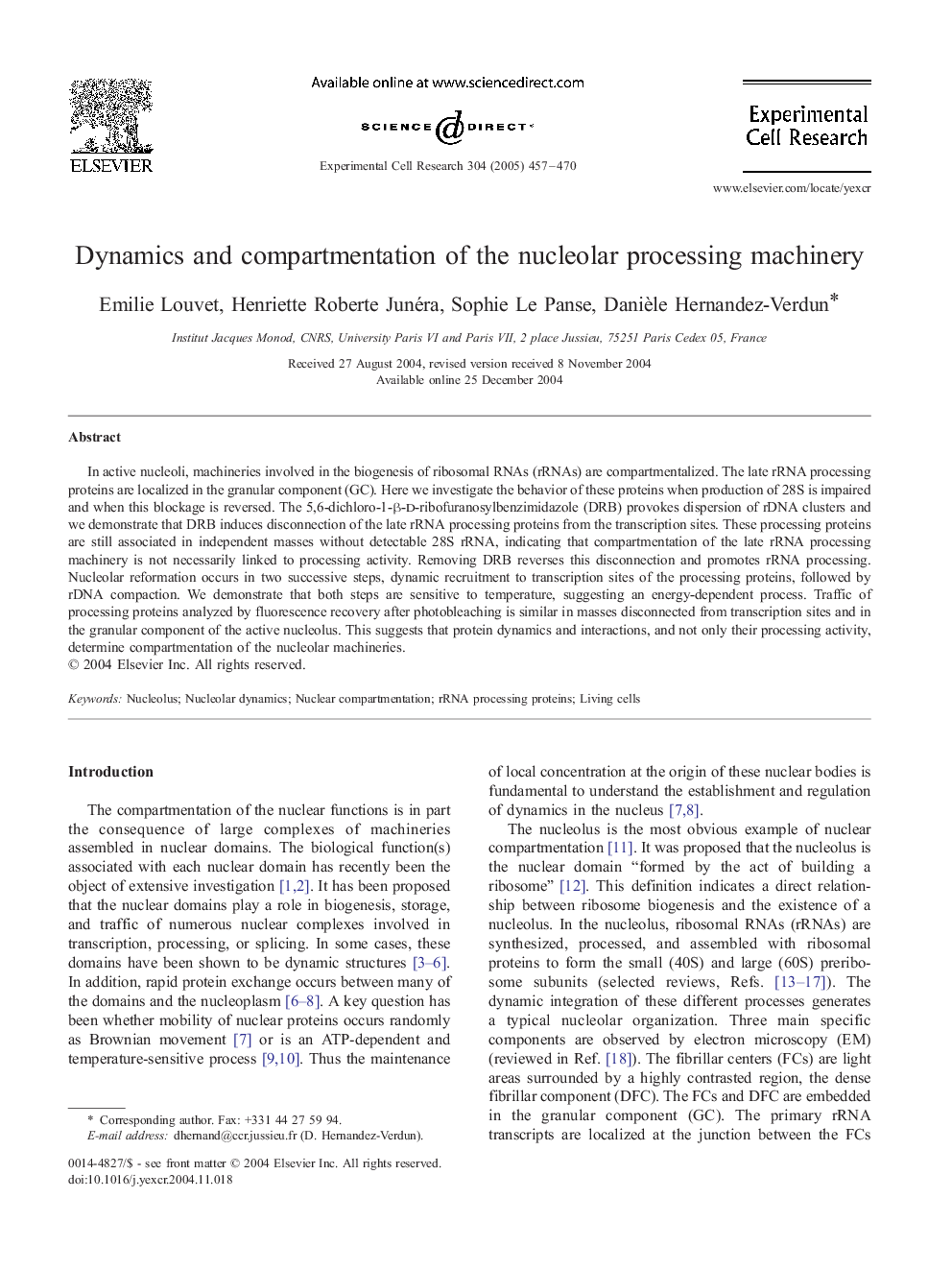| Article ID | Journal | Published Year | Pages | File Type |
|---|---|---|---|---|
| 10905030 | Experimental Cell Research | 2005 | 14 Pages |
Abstract
In active nucleoli, machineries involved in the biogenesis of ribosomal RNAs (rRNAs) are compartmentalized. The late rRNA processing proteins are localized in the granular component (GC). Here we investigate the behavior of these proteins when production of 28S is impaired and when this blockage is reversed. The 5,6-dichloro-1-β-d-ribofuranosylbenzimidazole (DRB) provokes dispersion of rDNA clusters and we demonstrate that DRB induces disconnection of the late rRNA processing proteins from the transcription sites. These processing proteins are still associated in independent masses without detectable 28S rRNA, indicating that compartmentation of the late rRNA processing machinery is not necessarily linked to processing activity. Removing DRB reverses this disconnection and promotes rRNA processing. Nucleolar reformation occurs in two successive steps, dynamic recruitment to transcription sites of the processing proteins, followed by rDNA compaction. We demonstrate that both steps are sensitive to temperature, suggesting an energy-dependent process. Traffic of processing proteins analyzed by fluorescence recovery after photobleaching is similar in masses disconnected from transcription sites and in the granular component of the active nucleolus. This suggests that protein dynamics and interactions, and not only their processing activity, determine compartmentation of the nucleolar machineries.
Keywords
Related Topics
Life Sciences
Biochemistry, Genetics and Molecular Biology
Cancer Research
Authors
Emilie Louvet, Henriette Roberte Junéra, Sophie Le Panse, Danièle Hernandez-Verdun,
